
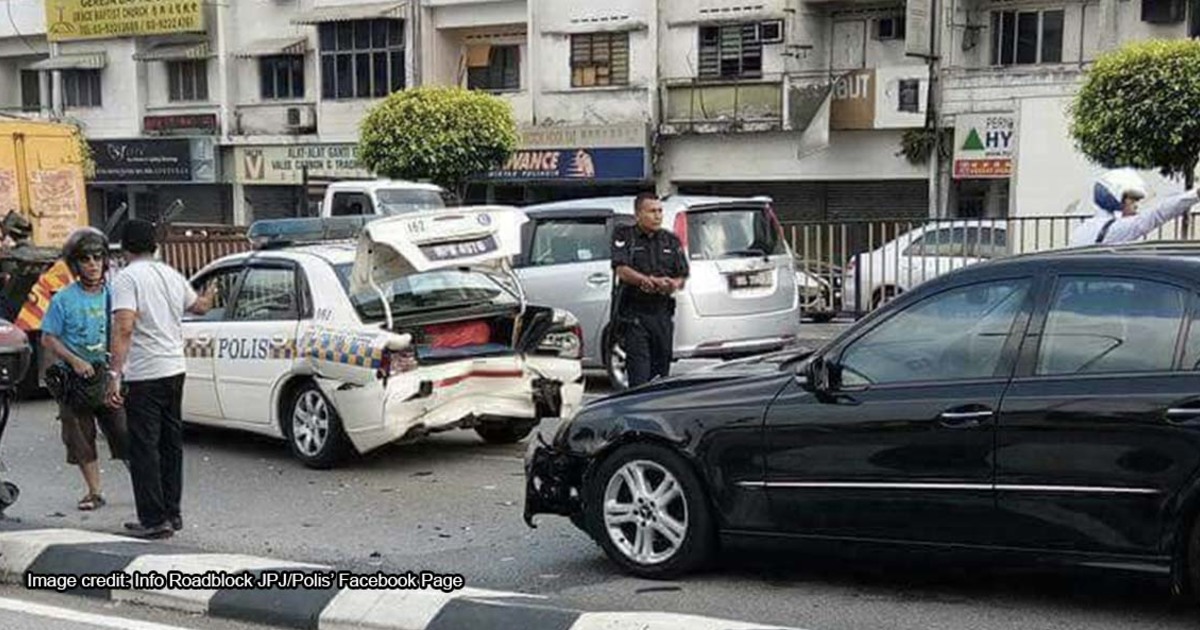
General,Traffic
If you get into an accident with a police car in Malaysia, are you automatically wrong?
about 7 years ago UiHuaIf you’ve ever been in a fender-bender while driving before, you’d probably know the drill – assess the damage to the car, try to determine whose fault it was, exchange information, and either settle privately or make a police report to proceed with insurance claims.
But what if you were sitting in your car one day, slowly wading through a traffic jam, and suddenly there’s a lurch forward just as you hear a sickening crunch of metal….. only to look into the rear view mirror to see a police car?
Well, for one thing, settling privately – which, by the way, isn’t a legally recognized way to settle a car accident – is out of the question, so what should you do? Well….
Everything starts with a police report
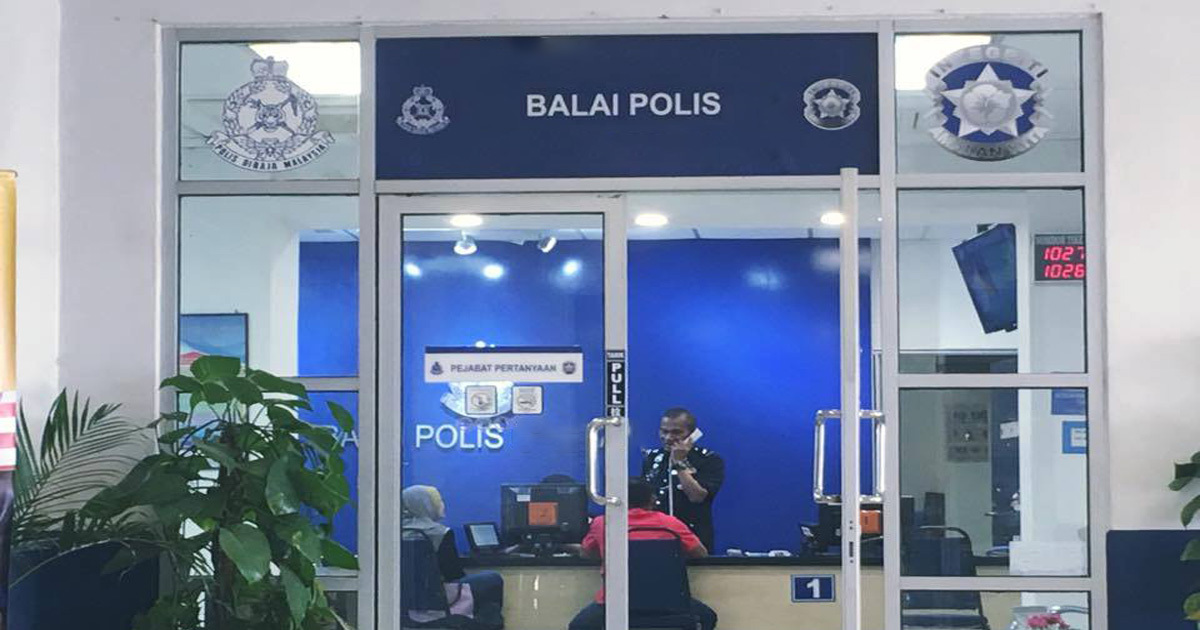
Let’s kickstart things off with the assumption that the accident is just a regular fender-bender where only the vehicles are damaged.
So, just as in a “regular” accident with a private car owner, you’ll have to kickstart things with a police report. The usual steps of exchanging information with the driver of the other vehicle (which may include the driver’s badge/ID number in this case) and making the report within 24 hours of the accident would apply. It would also help if you have photos of the accident scene before anything gets moved or a dashcam recording.
[READ MORE: If you hit a car from behind, are you automatically wrong?]
If you were at fault, you’ll be liable to pay a RM300 fine for causing the accident and claims will be made against your insurance.
However, if it’s the other party at fault, this is where things get interesting.
For police cars, Home Minister Datuk Seri Zahid Hamidi revealed in late 2017 that all vehicles owned by the police force are NOT protected by insurance. Instead, what you have to do would be to make the police report within 24 hours, and make a claim to the government for compensation.
"The police will not pay any compensation or vehicle repair cost to a third party if they are involved in a road accident. … Nevertheless the claims can be made to the government for the relevant costs or compensation. ... Every accident involving a government vehicle will be referred to a legal adviser to study the possibility of the government paying for the loss incurred by the accident.” – Datuk Seri Zahid Hamidi, as quoted by The Sun Daily.
This is under the assumption that the accident was a minor one, but what about more serious cases where you sustained injuries?
You’ll be suing the government, not the driver!
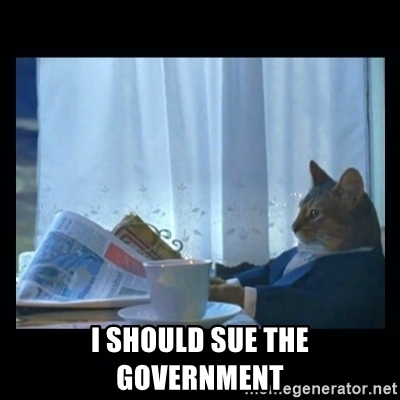
Police cars fall under the category of “Government Vehicles” which, very simply put, refers to any vehicle bought by a Malaysian ministry for official use. These include official Minister or Royalty cars, other police patrol vehicles such as bikes and mobile police stations, fire trucks, and ambulances. However, it’s worth noting that not all ambulances belong to the government:
[READ MORE: 5 things you need to know if you get into an accident with an ambulance]
So let’s say a police car crashed into you and – through no fault of your own – you end up with lifelong back pain, so you decide to sue for damages. However, you won’t be suing the driver of the police car. Instead, your lawsuit would be against the Government of Malaysia.
This is covered in Section 5 of the Government Proceedings Act 1956 (emphasis added by us):
What this basically means is that, because the officer who hit you was on duty at the time of the accident, your claims would be against his employer – the Malaysian Government. This would be different if the officer was off-duty at the time of the accident, in which you’ll be suing him as an individual. The falls under the principles of vicarious liability, which is the idea that employers are responsible for the actions of their employees. You can also read more on the topic here:
[READ MORE: If a worker hurts you by accident, do you sue him or his boss?]
For clarification, a policeman is considered to always be on duty when required to act as such; so by extension it would mean that, in a patrol car, they would be considered to be on duty even if the sirens aren’t on.
Section 19 of the Police Act 1967 – ‘Police officer to be deemed on duty’:
We’ll give our usual disclaimer to consult a lawyer if you’re actually planning to sue, but before you start looking for one for that accident you had with a police car in 1986…
There is a time limit for you to sue the government (and vice-versa)
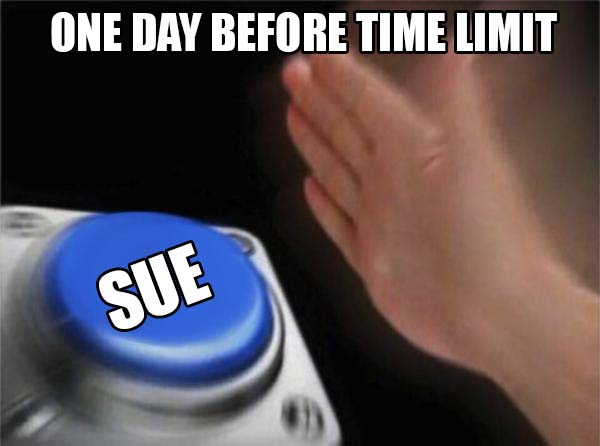
For civil suits in Malaysia, there’s something called a “limitation period” which limits how long you have to sue someone. While there are exceptions, the period is typically 6 years from when the incident occurred. What this means is that, if you were to sue someone 7 years after they crashed into your car, there’s a pretty high chance the judge won’t entertain your claims.
[READ MORE: Is there a time limit for you to sue someone in Malaysia?]
But when it comes to government authorities, they’ve got PAPA as an advantage.
PAPA in this case doesn’t refer to any sort of #daddy, but the Public Authorities Protection Act 1948 which states that you have only a 3-year period to bring the government to court.
Section 2(a) of the Public Authorities Protection Act 1948 (in part):
However, this doesn’t work the other way around, so the government still has 6 years to take you to court.
You CAN get in trouble for blocking police cars on duty
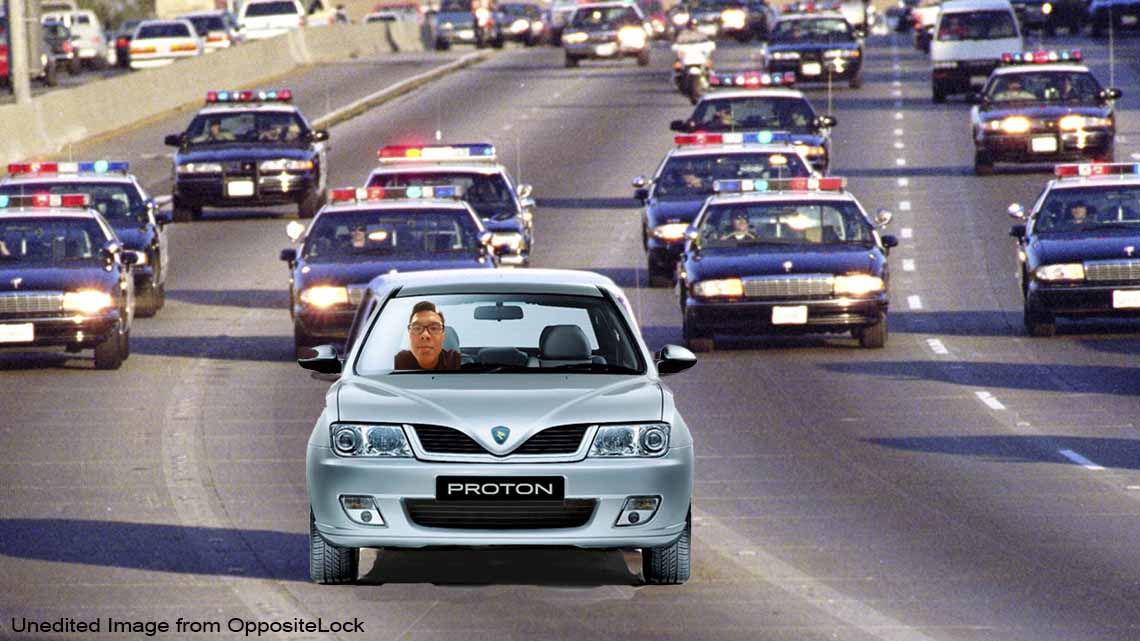
Under normal circumstances, it would be pretty clear-cut that a car that hits you while speeding would be in the wrong. However, this may not be the case when it comes to police cars.
Failing to give way – or worse, causing an accident – to a police vehicle responding to a call (in this context meaning that the sirens and strobe lights are on) may land you with a prison sentence of up to two years and/or a fine up to RM10,000 under Section 186 of the Penal Code:
Not just that, you may also run the risk of having your driver’s license suspended or revoked under JPJ’s KEJARA Demerit Points System. Failure to “give priority to ambulance, firefighter, police, custom, or Road Transaction Department car (with siren)” will net you 8 demerit points. For reference, the system works on 20-point tiers, with a 6-8 month suspension upon accumulating 40 points. Click here for JPJ’s FAQ on the system, and here for a list of demerit point offences.
While accidents sometimes cannot be avoided, especially in the event of a police chase; it’s always a good idea to be aware of your surroundings while driving and to make way when necessary – not just for police vehicles but emergency vehicles like fire trucks and ambulances as well. And to keep off the emergency lane unless there’s an actual emergency.
[READ MORE: If you illegally drive on the emergency lane and get hit, who’s wrong?]
Chief keyboardist at Asklegal. Don't ask me legal questions. Ask me about the tramp joke instead.